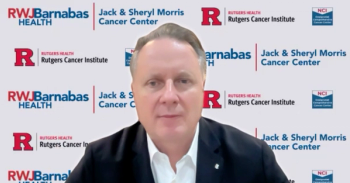
Terrill Jordan Discusses OCM Performance Period 4 Results
Terrill Jordan, chief executive officer of Regional Cancer Care Associates, discusses Oncology Care Model performance period 4 results and the biggest challenges community oncologists continue to face when trying to perform under the model.
Terrill Jordan, chief executive officer of Regional Cancer Care Associates, discusses Oncology Care Model performance period 4 results and the biggest challenges community oncologists continue to face when trying to perform under the model.
Transcript
With OCM Performance Period 4 results now out, how did the results compare with performance periods 2 and 3?
When you look at performance period 4 relative to performance periods 2 and 3, I think overall what you find is there is still some questions that are coming out. Each performance period we find there are some unresolved issues and then there are some new issues that we’ve encountered. So, I think there’s still some challenges. We’re excited to continue that journey. I think as we get more and more data points over time, we’ll have a better sense of what actually happened over the transition from performance period 1 all the way to performance period 9.
What continue to be the biggest pain points practices experience when trying to perform well under OCM?
I think the pain points that we’ve experienced are exactly the same as they always have been. You have to be efficient in this business be competitive as an independent practice, and we don’t have the resources, we’re not resource rich like a hospital. So, you have to use your resources appropriately, you have to make sure you maximize your resources. So, I think that challenge hasn’t changed and I think we’ll see that pain point continue.
I go back to being here at OncoCloud—the technology is the key differentiator. Our ability to use technology to further our practices, to further the clinicians license is really what’s going to distinguish us from a hospital. We should be able to do this better—we’re smaller, more nimble, and more importantly, we have the flexibility. You don’t have the bureaucracy that a hospital would face, and most importantly, we’re clinician led, so our clinicians are the ones who really decide what happens in our practices.
Newsletter
Stay ahead of policy, cost, and value—subscribe to AJMC for expert insights at the intersection of clinical care and health economics.













































